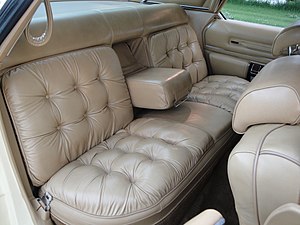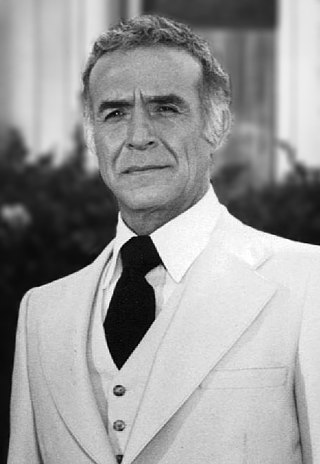
Ricardo Gonzalo Pedro Montalbán y Merino, KSG was a Mexican and American film and television actor. Montalbán's career spanned seven decades, during which he became widely known for performances in genres from crime and drama to musicals and comedy.

The Chrysler 300 "letter series" are high-performance personal luxury cars that were built by Chrysler in the U.S. from 1955 to 1965 and were a sub-model from the Chrysler New Yorker. After the initial year, which was named C-300 for its standard 300 hp (220 kW) 331 cu in (5.4 L) FirePower V8, the 1956 cars were designated 300B. Successive model years were given the next letter of the alphabet as a suffix, reaching the 300L by 1965, after which the model sequence was discontinued while the "300" remained. At its introduction it was advertised as "America's Most Powerful Car".

The Chrysler New Yorker is an automobile model produced by Chrysler from 1940 until 1996, serving for several decades as either the brand's flagship model or as a junior sedan to the Chrysler Imperial, the latter during the years in which the Imperial name was used within the Chrysler lineup rather than as a standalone brand.

The Chrysler 300 is a full-size car manufactured and marketed by Stellantis North America and its predecessor companies as a four-door sedan and station wagon in its first generation and solely as a four-door sedan in its second generation.
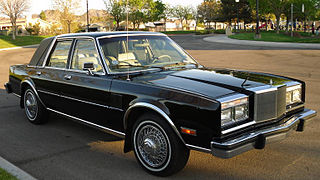
The Chrysler Fifth Avenue was a trim level/option package or model name used by Chrysler for its larger sedans from 1979 to 1993. The Fifth Avenue name was no longer used after 1993 when Chrysler introduced its new LH-platform New Yorker and similar LHS. The title "Fifth Avenue" references a street in New York City which contains many upscale shops and cultural attractions. The Chrysler Building is two blocks east of Fifth Avenue.

Imperial was the Chrysler Corporation's luxury automobile brand from 1955 to 1975, and again from 1981 to 1983.

Plymouth Voyager is a nameplate for a range of vans that were marketed by the Plymouth division of Chrysler. From 1974 until 1983, the Voyager was a full-size van, sold as the counterpart of Dodge Sportsman. Starting with the 1984 model year, the Voyager was marketed as one of the new Chrysler minivan, along with the Dodge Caravan. As a minivan, there were three generations of the Voyager from 1984 until 2000. Following the closure of the Plymouth division in 2000, the Voyager was marketed under the Chrysler brand as a lower-trim version of the Chrysler Town & Country through 2003.

The Chrysler Imperial, introduced in 1926, was Chrysler's top-of-the-line vehicle for much of its history. Models were produced with the Chrysler name until 1954, after which it became a standalone brand; and again from 1990 to 1993. The company positioned the cars as a prestige marque to rival Cadillac, Continental, Lincoln, Duesenberg, Pierce Arrow, Cord, and Packard. According to Antique Automobile, "The adjective 'imperial' according to Webster's Dictionary means sovereign, supreme, superior or of unusual size or excellence. The word imperial thus justly befits Chrysler's highest priced model."
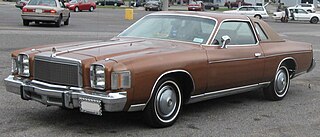
The Chrysler Cordoba was introduced as a full-sized luxury car based on the Chrysler Newport that was marketed during the 1970 model year. It was also applied to a show car exhibited that year.
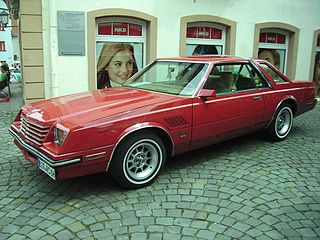
The Dodge Mirada is a mid-sized, rear-wheel drive coupe manufactured and marketed by Dodge for the model years 1980 to 1983, sharing the Chrysler J platform along with its badge engineered variants, the second generation Chrysler Cordoba and the Imperial. Production of the Mirada reached just under 53,000 units, staying relatively unchanged during its four-year run, with the exception of paint colors and engines. The Mirada was marketed as a sporty personal luxury car with limited advertising and marketing during a period when Chrysler was in deep financial difficulty.

The Plymouth Fury is a model of automobile that was produced by Plymouth from 1955 until 1989. It was introduced for the 1956 model year as a sub-series of the Plymouth Belvedere, becoming a separate series one level above the contemporary Belvedere for 1959. The Fury was a full-size car from 1959 until 1961, then a mid-size car from 1962 until 1964, again, a full-size car from 1965 through 1974, and again, a mid-size car from 1975 through 1978. From 1975 until 1977, the Fury was sold alongside the full-size Plymouth Gran Fury. In 1978, the B-body Fury was the largest Plymouth, and by 1979, there was no large Plymouth. This product gap was filled in 1980 with the R-body Gran Fury, followed by the M-body Fury in 1982. Production of the last V8, RWD Plymouth Fury ended at the Kenosha Main assembly plant in Kenosha, WI, on December 23, 1988. Unlike its sibling brand, Dodge, Plymouth would not live to see the resurgence of the large, V8/RWD sedan.
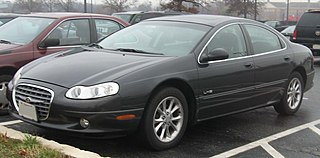
The Chrysler LHS is a full-size luxury four-door sedan that was produced by Chrysler for the 1994 through the 2001 model years, with a one-year hiatus for 1998. It replaced the Chrysler Imperial and the Chrysler Fifth Avenue as the division's flagship model. The LHS was rebadged as the Concorde Limited for the 2002 model year.

The Chrysler Pacifica is a mid-size crossover produced by Chrysler from 2003 to 2007, for the model years 2004 to 2008.

Bozell is an American full-service public relations and advertising agency in Omaha, Nebraska.
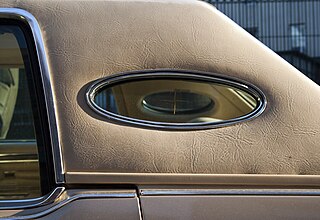
An opera window is a small fixed window usually behind the rear side window of an automobile. They are typically mounted in the C-pillar of some cars. The design feature was popular during the 1970s and early 1980s and adopted by domestic U.S. manufacturers, most often with a vinyl roof.

Barreiros was a Spanish manufacturer of engines, trucks, buses and automobiles. It was a Chrysler Europe subsidiary from 1969 to 1978.
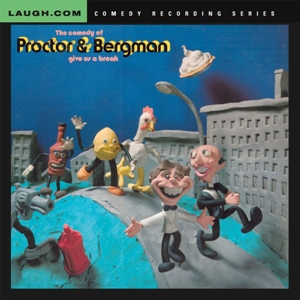
Give Us A Break is a 1978 comedy album by comedy duo Proctor and Bergman, one half of the Firesign Theatre.

The Chrysler 300 was a full-size automobile produced by Chrysler from 1962 until 1971. It was a continuation of the earlier Chrysler 300 letter series. Chrysler decided to consolidate its product line and the sedan replaced the 1961 Chrysler Windsor, which itself filled the place in Chrysler's line previously occupied by the Saratoga just the year before that (1960) and also filled in for the discontinued DeSoto product line. At the time, it was considered a luxurious "muscle car", with all the performance of the Dodge and Plymouth products of the time, but with the luxury features expected of the Chrysler name.

The first-generation Chrysler minivans are a series of minivans produced and marketed by the Chrysler Corporation from the 1984 to the 1990 model years. Introduced as the first minivans from an American-brand manufacturer and popularizing the minivan as a vehicle, the Dodge Caravan and Plymouth Voyager were launched ahead of chief competitors Chevrolet Astro/GMC Safari and Ford Aerostar.

Chrysler is an American brand of automobiles and division owned by Stellantis North America. The automaker was founded in 1925 by Walter Chrysler from the remains of the Maxwell Motor Company. The brand primarily focused on building luxury vehicles as the broader Chrysler Corporation expanded, following a strategy of brand diversification and hierarchy largely adopted from General Motors.
